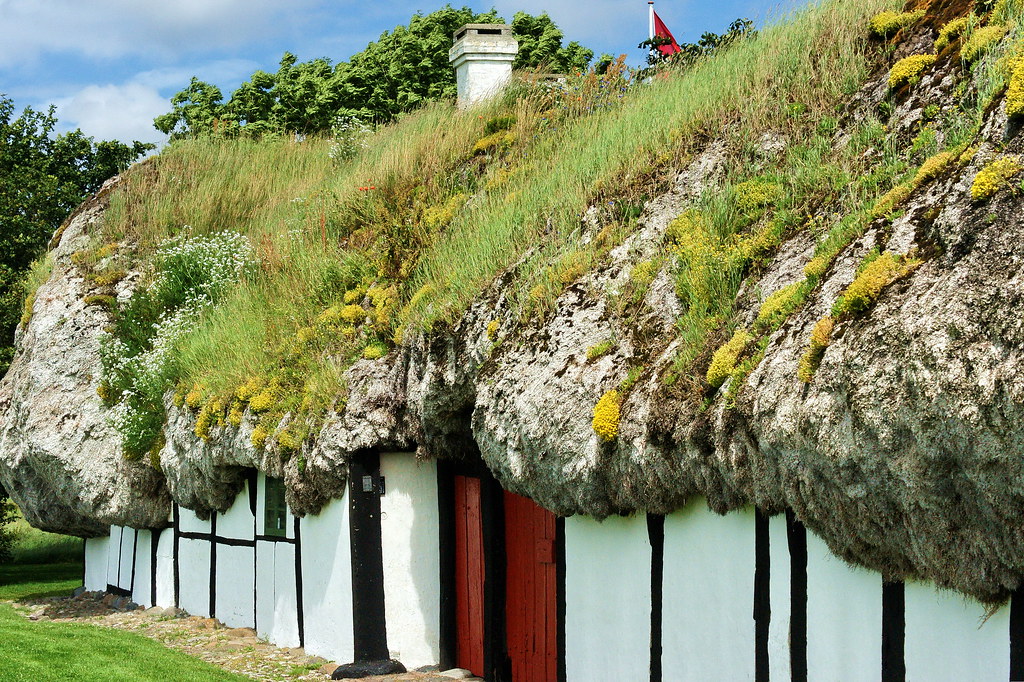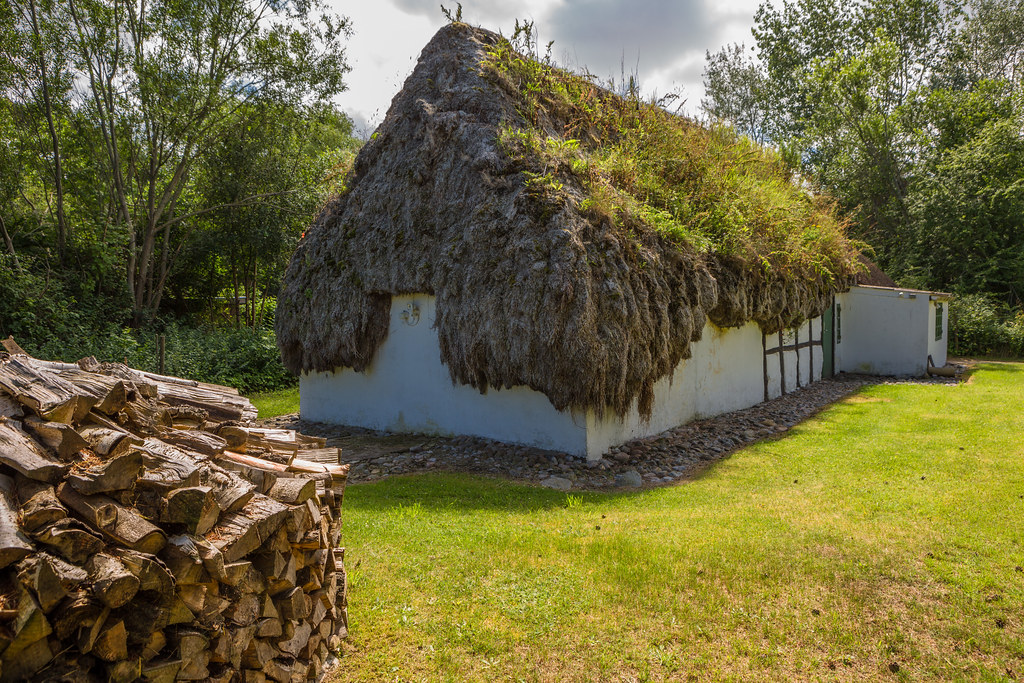Apart from their humongous size, they look a lot like thatch but seaweed is far more durable.
Some of these roofs are over 300 years old.
They are a unique feature of the island of Ls.
The island was practically soaking in salt.
Hundreds of salt kilns were built on the island to refine the salt.
With no wood left to fire the kilns, Lss salt industry collapsed.
With no trees left to break the wind, Lss villages were buried in sandstorm.
Ls, however, had plenty of eelgrass and driftwood.
So the people began using driftwood to build their houses and the eelgrass was used for the roof.
Eelgrass grows on the islands seas and were once so abundant that it frequently washed up on the shores.
Traditionally, weaving bundles of seaweed together was done by the islands women folk.
As many as one hundred women and young girls would take part in the activities.
Shipwrecks were the only source of wood on Ls.
The roofs are also exceptionally heavy.
Today, the island has been reforested and residents can no longer see the sea from their rooftops.
Now, many houses are surrounded by trees, protecting them from salt-laden winds.
Photo credit:TrineBM/Wikimedia
Photo credit:Beth/Flickr
Photo credit:Gert Pedersen/Flickr
Sources:Natural Homes/Financial Times






